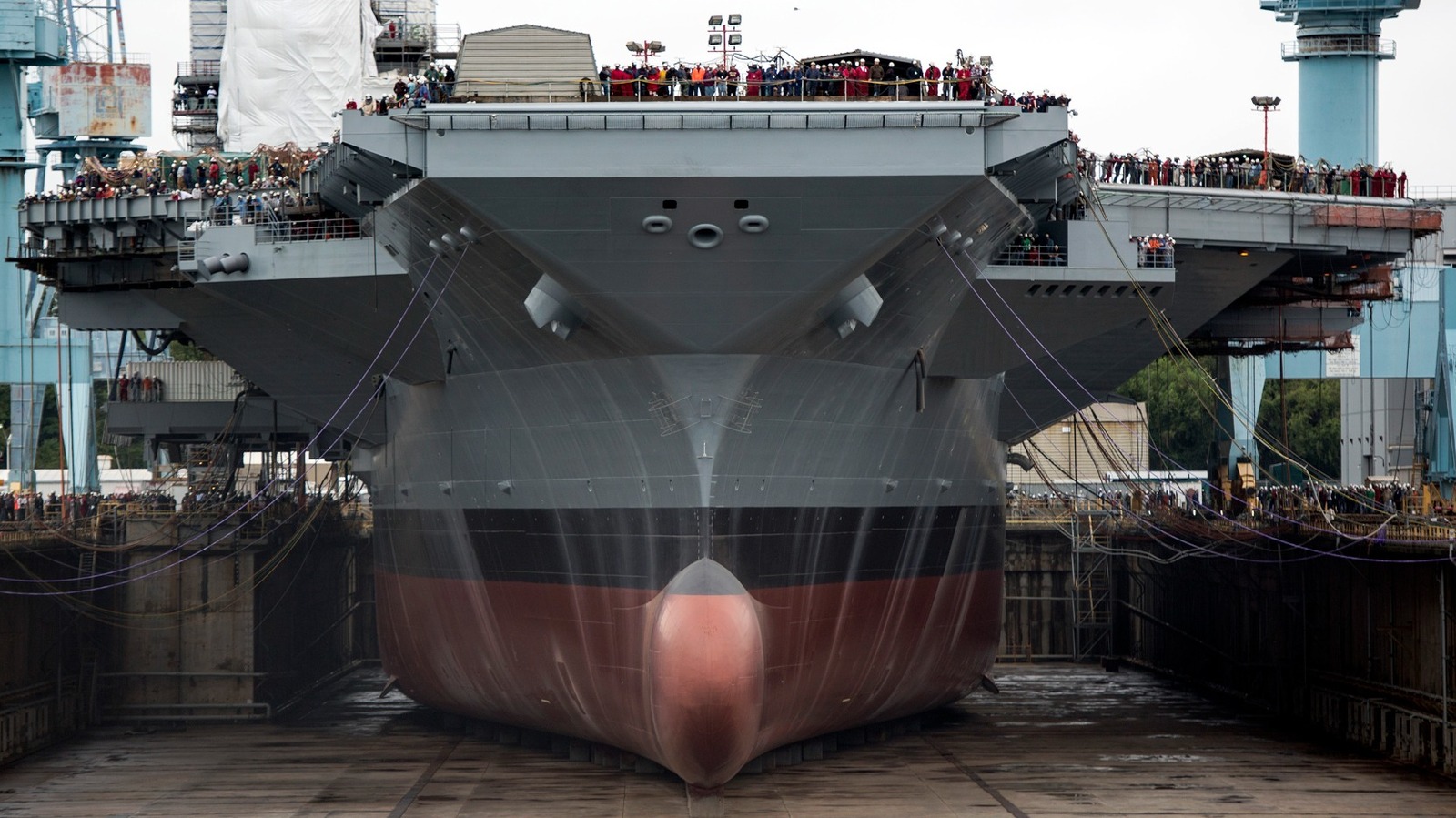Copyright SlashGear

During his October tour of East Asia, President Donald Trump boarded the USS George Washington (CVN-73) to speak to the service members onboard. In his speech, the President made it clear that he was steadfastly opposed to using the recently developed Electromagnetic Aircraft Launch System (EMALS), currently installed on the USS Gerald R. Ford (CVN-78), preferring instead to go back to the steam-powered catapults used in earlier aircraft carrier generations. In his speech, President Trump explained that he'd sign an Executive Order to abandon EMALS in favor of steam catapults and hydraulic elevators for any new carriers, and there are two under construction as of writing. To the President's credit, EMALS has not been without its problems, as they've experienced cost overruns, reliability issues, and complexity in their use. They're used in conjunction with the Advanced Arresting Gear (AAG) system, which also has reliability failures since its installation on the Ford. Given these concerns, President Trump's remarks aren't coming from a vacuum. While the President has his reasons, if there's one thing the United States Navy should not do, it's return to steam-powered catapult systems for its future carriers. Once all the kinks have been worked out, EMALS will be far superior, launching aircraft at much faster rates than legacy steam catapults. They don't require steam boilers and complex piping running throughout the ship, and they're an antiquated technology. EMALS puts less stress on aircraft, can launch more varieties of planes, and requires less maintenance, so unfortunately, the President's interests in this matter would only make aircraft carriers worse. Whenever any new technology is integrated into a ship, there are going to be issues, and that's what's been happening with the EMALS and AAG systems on the USS Gerald R. Ford. That's to be expected. These problems weren't inexpensive by any measure — the Ford's costs shot up to nearly $13 billion, 23% more than planned, but the military is efficient at incorporating lessons learned, so future carriers will be constructed with more knowledge on how to better integrate and utilize these systems. The Ford is, after all, the lead in its class, and the largest and most advanced warship ever made. There are bound to be problems, but they're being addressed. Still, were the Ford to revert to the use of steam catapults, that would dramatically reduce its capabilities and require major areas of the ship to be deconstructed, reconstructed in new ways, and made to accommodate nonexistent boiler systems, costing billions. So, President Trump's potential EO would likely only impact ships that haven't had their new systems installed. The USS Enterprise (CVN-80) is the next ship in the line, and while it's been delayed, it's likely too far along in its construction to change its integrated systems. That leaves the forthcoming USS Doris Miller (CVN-81) as a potential recipient of steam-powered catapults. To the technology's credit, it works and has been around since the British HMS Perseus in the early 1950s. While a tried and tested tech, there's no denying its inferiority to what EMALS brings to the table. While President Trump has the authority to issue the Department of War orders, altering construction methods of military equipment at this scale is somewhat complicated. Since Congress has the power of the purse, it's likely not as easy as issuing an EO and being done with it. Alterations of this scale would require a complete redesign of the Gerald R. Ford-class aircraft carriers, and that's not a cheap proposition. Still, were the President's desires to be made manifest, it would be a bad move for the Navy. EMALS can load and launch aircraft faster than steam catapults, which is a big deal when you're talking about aircraft carrier operations. The ability to quickly deploy fighters and other aircraft is the ship's primary purpose, so reducing its launch speed is counter to how these massive ships are utilized strategically and tactically. The Ford integrated numerous advanced and novel technologies, and has had problems getting everything to work. There's no denying that reality. Still, it's unlikely future Ford-class carriers will follow suit, and therein lies the problem. Older Nimitz-class carriers use steam, but launch 25% fewer sorties than their successor. Those numbers alone make the EMALS a significant force multiplier, and are more than enough of a reason to stick with it moving forward — not to mention, over time, it will prove far cheaper than steam. Hopefully, the President's military advisors will detail the costs and issues surrounding the use of both systems, and he'll make an informed decision in relation to a future EO because EMALS should not be replaced with 75-year-old technology.



